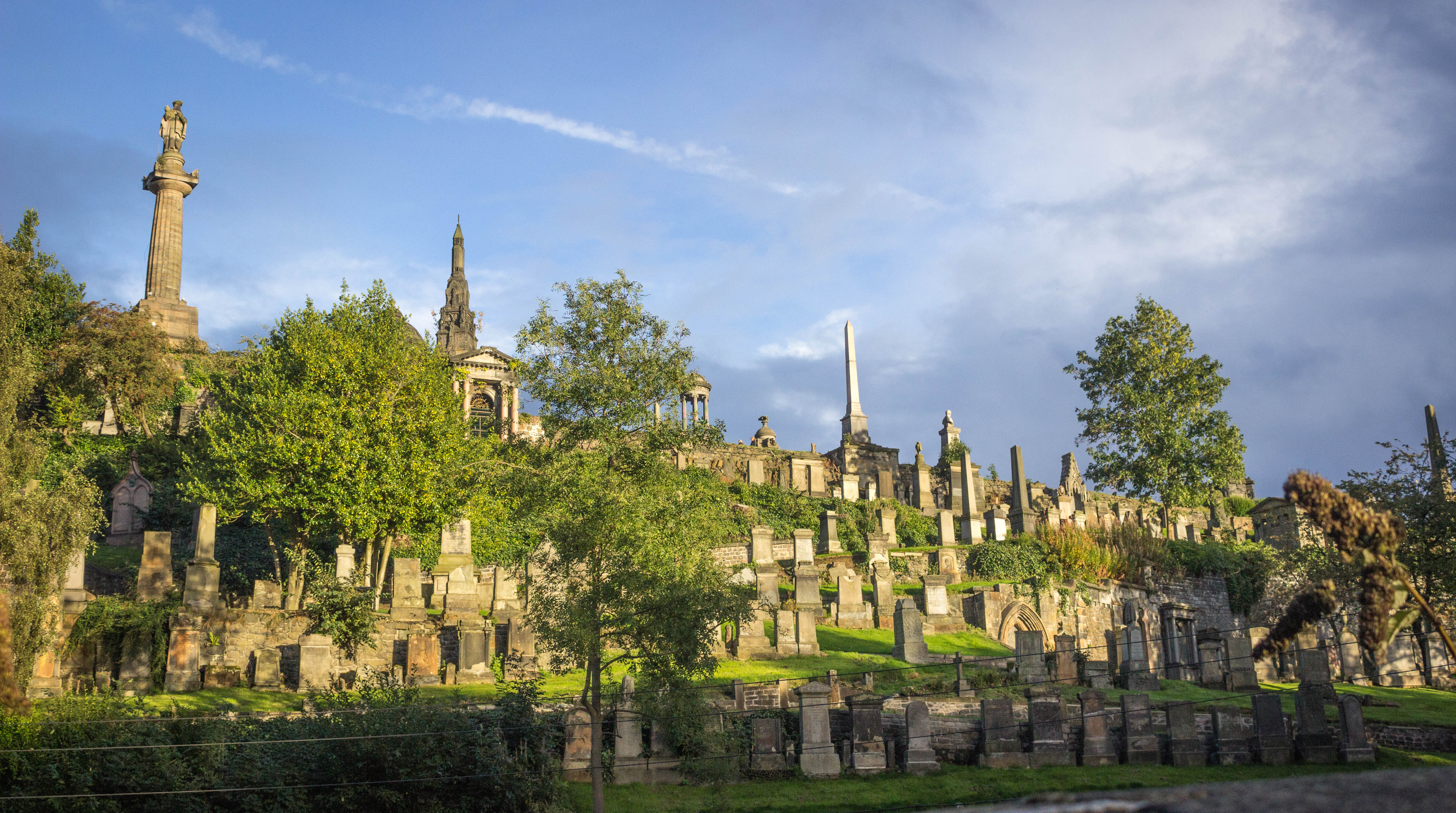“The cemetery is an open space among the ruins, covered in winter with violets and daisies.” Percy Bysshe Shelley, Preface to Adonais (1891)
Percy Shelley’s description of the Protestant Cemetery in Rome perfectly illustrates how the cemetery, often negatively associated with death and decay, can in fact be a place where nature flourishes.
In this blog post, we highlight some of the great work being done to promote and conserve biodiversity in cemeteries, and the wider benefits of this.
Cemeteries as ‘green oases’
The importance of cemeteries as urban green spaces is often overlooked. Relatively untouched by surrounding urban development, cemeteries often act as green oases, providing a range of important natural habitats for many different – and often rare – plant life and animals.
Indeed, as the 2000-01 Select Committee Report on Cemeteries observes:
“Cemeteries support a wide range of habitats, including relict grasslands, heath, ancient and secondary woodland, scrub, hedges, ponds and flushes, as well as more artificial features such as high maintenance lawns, stands of trees, ornamental flower beds, and shrubberies. In addition, buildings, monuments, tombs and headstones, made from a variety of rocks, can provide support for lichens, mosses and ferns, as well as providing geological interest. A large number of rare species of trees, plants, fungi, invertebrates, reptiles, birds and mammals are found in cemeteries. Cemeteries are often designated as local Wildlife Sites, and sometimes as Nature Reserves.”
Green space such as that provided by cemeteries, churchyards and other burial sites is important for a number of reasons.
From an environmental perspective, green space can help to address the negative effects of climate change, including the catastrophic decline in the number of insects. And from a human perspective, research has consistently shown the health and wellbeing benefits of access to green space.
Thus, cemeteries have an important role to play in both supporting the environment and promoting the health and wellbeing of local people.
Case study: Glasgow Necropolis
The Glasgow Necropolis is an impressive example of a Victorian garden cemetery, designed to be both inspiring and aesthetically pleasing.
Today, it is the second largest greenspace in the centre of Glasgow and provides a diverse range of habitats for wildlife, including sandy slopes, ivy-covered rock, wooded areas and unmown areas of grass and wildflowers.
The Friends of Glasgow Necropolis is a charity staffed entirely by volunteers dedicated to the conservation of the cemetery.
As well important monument conservation and restoration projects, and hosting walking tours to engage and educate the public, they also work to support the cemetery’s role as a space for nature. One key aspect of this is recording and monitoring the flora and fauna within the cemetery.
Recent surveys have found that the Necropolis supports over 400 species of animals – including a variety of species of birds, bees, butterflies, insects and spiders, as well as deer, foxes, squirrels and rabbits, and a variety of other small mammals. Some of these species are particularly rare, including the aptly-named hoverfly, Eumerus funeralis.
There is also a wide diversity of plant life. In total, 180 species of flowering plants and trees have been recorded in the Necropolis, and there are also at least 15 species of lichens – including one rare species (Lecania cyrtella).
Other key projects have sought to actively enhance the biodiversity of the cemetery – such as the creation of a wildflower meadow, planted with the help of local school children, and the creation of the ‘Green Man’ – a 3D grass head sculpture, in collaboration with the Glasgow School of Art, Glasgow City Council, Dennistoun Community Council, Dennistoun Conservation Society and Foundation Scotland.
There are also plans underway to create a ‘tree map’ for the Necropolis – a visual representation of the different tree species that exist within the cemetery grounds.
Engaging local communities
Across the UK there are a number of examples of other grassroots projects working to promote, conserve and engage local communities in cemeteries’ rich natural heritage.
Some notable examples include:
- Educational nature walks run by Falmouth Cemetery
- Mindfulness events held in Brompton Cemetery in London
- Activities for children, such as bug identification, at York Cemetery
- School engagement projects and Bioblitz events held at Wardsend Cemetery
- A herb garden created by the Greyfriars Community Project in Edinburgh
- Community learning events including dry stone walling, basket weaving and woodland management run by the St Nicholas Churchyard Project
- A gardening group run by Friends of Morningside Cemetery in Edinburgh
- A wildflower meadow maintenance training course run by Kingston Cemetery Nature Group
There have also larger-scale projects and campaigns to promote the role of cemeteries as havens for wildlife.
Caring for God’s Acre is a charity working to “support groups and individuals to investigate, care for, and enjoy burial grounds”.
For a week in June each year, they run a national ‘Love your Burial Ground’ campaign, which encourages people to connect with and celebrate their local churchyards, cemeteries and burial grounds through a variety of local events.
They are also responsible for running the ‘Beautiful Burial Grounds Project’ – a £600,000 Heritage Lottery Fund project that aims to “inspire, engage and support interest groups, communities and individuals to learn about, research and survey the natural, built and social heritage of their local burial grounds”.
The project includes collecting, collating and disseminating data on the importance of burial grounds for biodiversity, providing training events on recording biodiversity and disseminating a variety of resources such as short films, toolkits and pop ups to encourage communities to value their burial grounds as refuges for wildlife.
The Green Flag Award scheme has also been involved in the promotion of cemeteries as spaces for nature. The scheme “recognises and rewards well managed parks and green spaces” and at present, over 80 cemeteries have received this award, including Tipton Cemetery in Sandwell, and the new Dumbarton Cemetery – the first cemetery in Scotland to be awarded a Green Flag.
Challenges to address
There are of course a number of challenges to be addressed if the full potential of cemeteries as green spaces are to be realised.
Firstly, there is a lack of data on the plant and animal species that exist within cemeteries. This lack of ecological awareness can mean that sometimes burial ground management and maintenance can be well-intentioned, but inappropriate or damaging. Thus, projects to record species – such as those conducted by the Friends of Glasgow Necropolis and other cemeteries’ friends groups – are incredibly important.
There is also a need to find an appropriate balance between allowing nature to flourish and ensuring that the cemetery remains accessible. For example, there have been complaints that long grass around headstones can make it difficult for some people to visit family graves. The Select Committee Report on Cemeteries notes that: “conservation must not be confused with neglect. A neglected cemetery does not become a haven for flora and fauna.”
Health and safety is another key consideration. Unstable memorials can cause serious – and sometimes fatal – injuries. Any project operating within cemeteries needs to be aware of this risk, particularly if it involves children or young people. The Scottish Government recently published guidance for local authorities on inspecting and making safe memorials and headstones.
Other potential barriers to the use of cemeteries as green spaces include the lack of onsite facilities, such as toilets and bins, physical constraints, such as steep stairs, lack of vehicle access/wheelchair access, and concerns about visitor safety and anti-social behaviour. These issues, however, are not insurmountable – for example, the Friends of Glasgow Necropolis have recognised these accessibility concerns and raised funds from grant applications to resurface many of the paths on the lower levels of the cemetery to make it easier for people with mobility problems to get around.
‘Living places’ that inspire
“It is worth remembering too that cemeteries were set up not just to bury the dead but to stir the Muses among the living.” Fiona Green, a landscape historian, quotes John Strang‘s Necropolis Glasguensis (1831)
Cemeteries are not just for the dead. They are in many ways ‘living places’ – havens for a range of plant and animal species in the midst of urban housing and development. They also have an important role to play in the wider community, providing opportunities for local people to connect with and be inspired by nature.
And hopefully, after reading about the many ways in which people across the country are getting involved with nature at their own local burial grounds, you may be similarly inspired.
If you’ve enjoyed this blog, take a look at some more posts on the subject of biodiversity:
Share
Related Posts
The Knowledge Exchange Information Service will close on Friday 23 December. Our service will reopen on Tuesday 3 January 2023. The first bulletin of 2023 will be published on 11 January, and the first Topic Updates of the New Year ....
It is well recognised that the UK faces a shortage in STEM (science, technology, engineering and maths) skills, and that at current projections, this gap in skills and knowledge is only going to grow in the coming years. Before the ....


